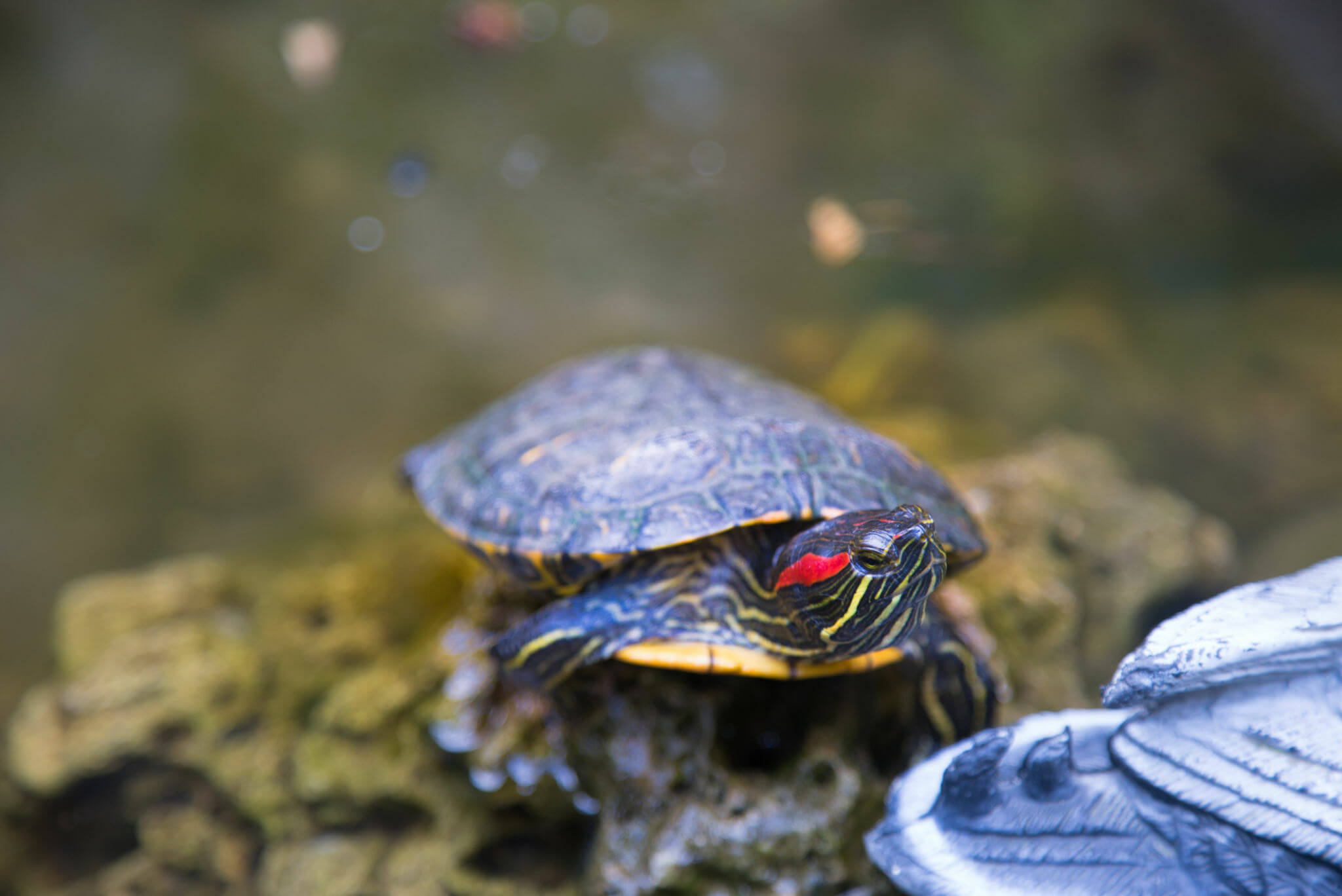Are you noticing your red-eared slider blowing bubbles and wondering what it means?
Red-eared sliders often blow bubbles due to respiratory infections. If this is accompanied by lethargy, appetite loss, or swimming difficulties, it’s crucial to consult a vet.
I’ll discuss the symptoms, treatments, and prevention tips to keep your turtle happy.
Symptoms Of Respiratory Infection In Red Eared Sliders
Bubbling At The Nose Or Mouth
As noted, bubbles around the nose or mouth are a telltale sign. It’s often the most visible symptom, usually the first pet owners notice.
Lethargy
A significant decrease in energy or a noticeable change in activity levels can indicate infection. If your turtle is less active than usual or weak, it’s a cause for concern.
Appetite Loss
Is your turtle eating less, or has it stopped eating altogether? Changes in eating habits are a common symptom of many health issues, including respiratory infections.
Swimming Difficulty
Respiratory issues can affect buoyancy and swimming ability. Watch for any unusual swimming patterns, like floating lopsided or struggling to dive.
Wheezing Or Difficulty Breathing
Listen for any unusual breathing sounds, like wheezing or gasping. This could indicate that the infection is affecting the lungs.
Discharge From Eyes Or Nose
Any discharge, particularly thick or colored, is a red flag. Healthy turtles should not have any discharge from their eyes or nose.
Treatment For Respiratory Infection In Red Eared Sliders
Apply Water Solution
You can apply this API TURTLE FIX to treat bacterial infections in your turtle tank.
Antibiotics
Often, antibiotics are the primary treatment for a respiratory infection in turtles. These are usually administered by injection. The duration and type of antibiotic will depend on the severity of the infection.
Increase Temperature
Increasing the basking and water temperatures within safe limits can make your turtle feel more comfortable. This doesn’t cure the infection but can mitigate symptoms until you see a vet.
How To Avoid Red Eared Slider’s Respiratory Infection?
- Maintain the water temperature between 75-80°F (24-27°C) for adults and 80-85°F (27-29°C) for hatchlings.
- Ensure the basking area is warmer, with temperatures around 85-90°F (29-32°C), to enable proper thermoregulation.
- Provide UVB lighting 10-12 hours daily to help the turtle synthesize vitamin D3.
- Perform partial water changes weekly to remove waste and prevent the buildup of harmful substances.
- Supplement their diet with calcium and vitamins, especially vitamin A, to prevent deficiencies that can lead to health issues.
How Do I Know If My Red-Eared Slider Is Stressed?
A sudden decrease in appetite or refusal to eat can be a sign of stress. While this can also indicate illness, it’s often a turtle’s response to stress.
While it’s normal for turtles to seek shelter, constantly hiding or avoiding the basking area more than usual can indicate stress.
If your normally calm turtle suddenly becomes aggressive or snapping, it might feel stressed or threatened.
Repeatedly swimming against the glass or pacing the perimeter of their tank can be a sign of stress, often due to a small or inadequately enriched environment. If your turtle is persistently scratching at the tank walls, it could be trying to escape a stressful environment.
How Do I Know If My Red-Eared Slider Is Cold?
One of the most noticeable signs is a decrease in activity. If your turtle is less active than usual, especially when it’s typically active, it may be too cold. If your turtle is spending excessive amounts of time basking and seems reluctant to leave the basking area, it might be trying to warm up.
Cold temperatures can slow a turtle’s metabolism, reducing appetite. If your turtle is eating less than usual, it could indicate that the water is too cold.
In the wild, red-eared sliders can become dormant in cold weather. If the temperature drops too low in captivity, they may exhibit behaviors similar to hibernation, like burying themselves in the substrate or becoming very still.
Final Thoughts
If your red-eared slider is blowing bubbles, it’s often a sign of a respiratory infection requiring prompt attention. Understanding the symptoms and seeking veterinary care are crucial steps. Maintaining an optimal habitat, providing a balanced diet, and ensuring proper UV lighting are essential to prevent such health issues.
Related Posts:
Sources:

